
 |
|
#21
|
|||
|
|||
|
One final skin to complete the daytime camouflage patterns of the Bf-110C-4: a plane from 8./ZG 26 that flew in September 1942. It had been repainted for the Libyan campaign in RLM 79 (sandgelb) with the underside in RLM 78 (hellblau).
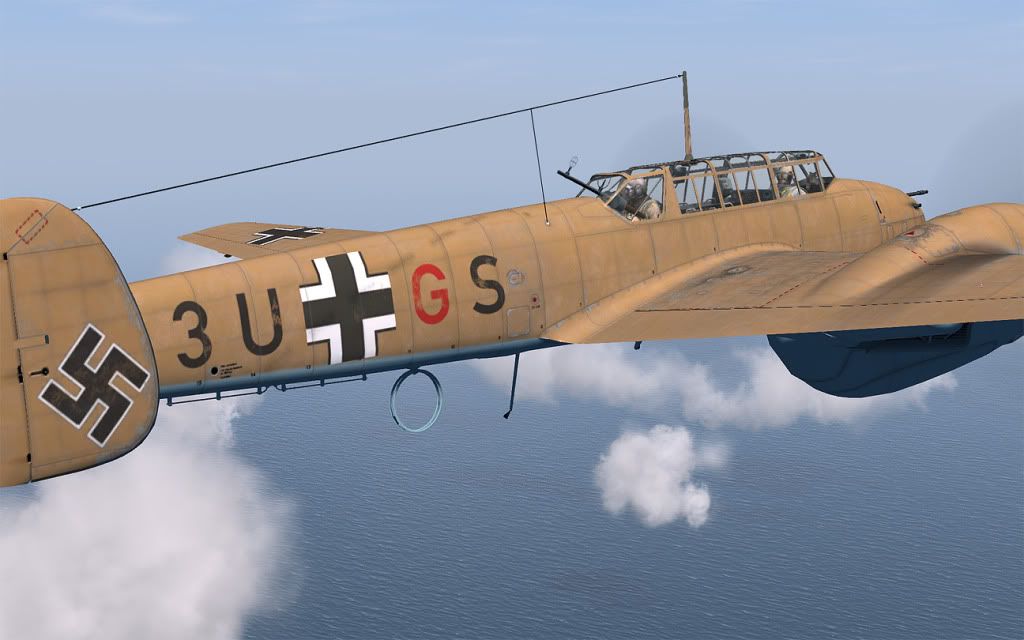 There is no agreement as to the actual color scheme and even some uncertainty as to the variant. On the basis of the photograph below, which shows a dust filter on the port wing, Vasco and Estanislau have concluded that the plane is a tropicalized E-4. They illustrate it with the sand-colored camouflage extending over the whole of the fuselage, including the engine nacelles, with only the underside of the wings in light blue. 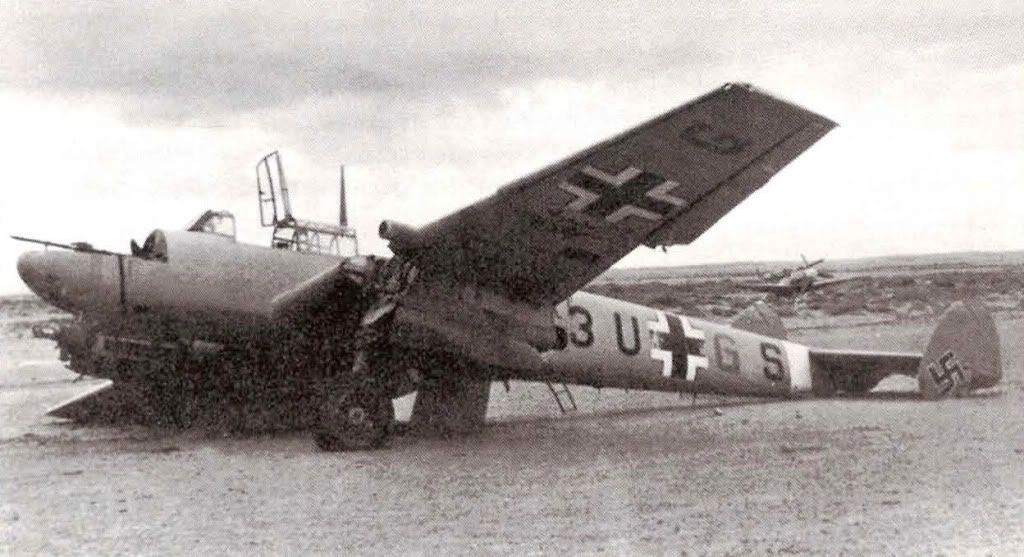 All this would seem to be correct and reasonably preclude the plane being skinned as a C-4. Breffort and Jouineau, however, identify it as just that type. They retain the under-carriage in RLM 78, although not as robin's-egg blue. Nor do they color the spinner tip and or the under-wing letter (as rendered by Estanislau). And, in spite of the photographic evidence, they place the hakenkreuz far too high on the tail fins. If ever there was a plane to prove csThor's dictum that illustrations are not really reliable for colors, it is this one. It goes without saying that 3U+GS is not appropriate for the Battle of Britain. But for those who might want to pretend that they are flying over the shores of Tripoli or simply enjoy a different screenshot, I hope it proves satisfactory. It is available here. Last edited by aelius; 09-18-2011 at 09:07 PM. |
|
#22
|
|||
|
|||
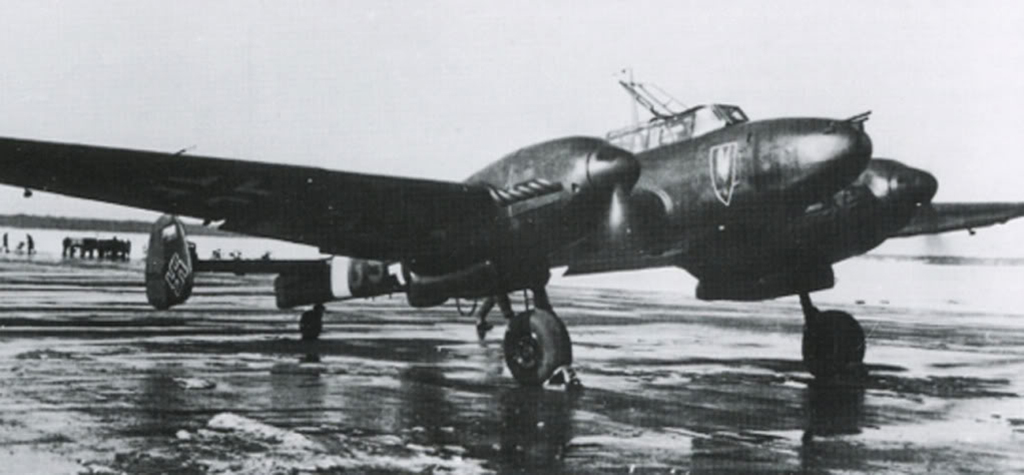 Although woefully inadequate against the more nimble Spitfire and Hurricane, the Bf-110 did prove itself an excellent night fighter. The badge so prominently displayed on the nose identifies the Nachtjagdgeschwader, which was established in the summer of 1940. Its Englandblitz derived from the family coat of arms of Hauptmann Wolfgang Falck (falke, "falcon" in German), kommodore of its first unit, I./NJG 1. Although he was awarded the Knight's Cross, it was more in recognition of his later administrative abilities than for his seven victories as a Zerstorer pilot, all of which, ironically, were won flying in daytime. This particular plane, G9+GA, was the first to be painted overall in black, the green letter "G" a carryover from Falck's earlier combat flying and against regulations.  Depictions of the plane show eight and even nine bars, possibly because some of his RAF kills were not confirmed. I've retained the eight that were painted on the tail: three won in Poland, four in Britain (one of which later was determined to be unconfirmed), and one in Denmark. Falck's night fighter can be downloaded here. Here is a screenshot. 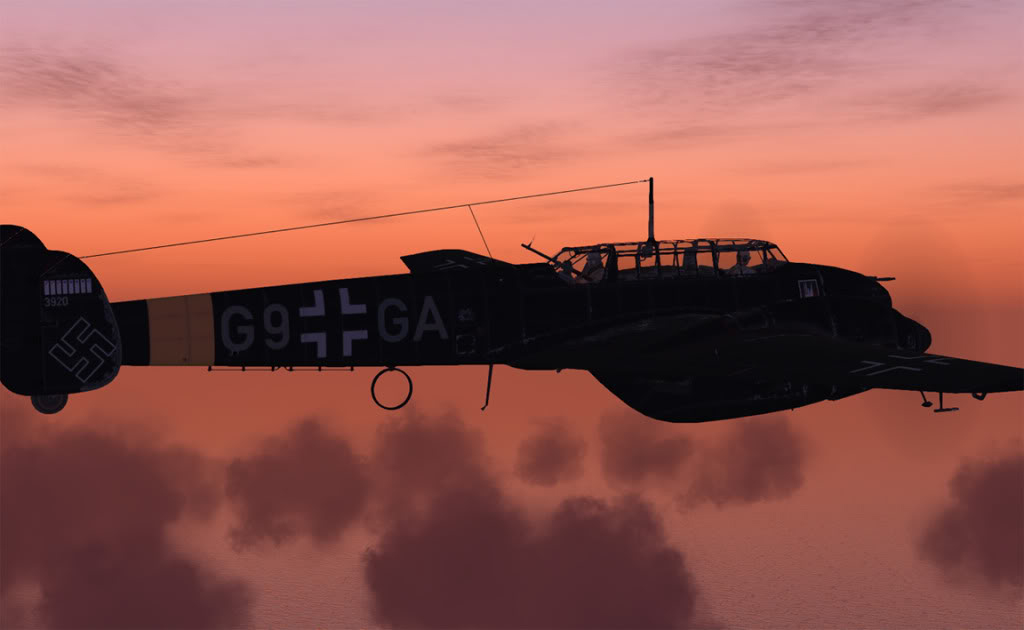 Last edited by aelius; 04-23-2019 at 09:33 PM. |
|
#23
|
|||
|
|||
 This Bf-110C-4 was stationed in Libya when, after heavy losses during the Battle of Britain, LG 1 was disbanded and, retaining its unit code, reformed as 1./NJG 3. A photograph (below) shows the plane being repaired on an airfield at Benghazi in May 1941.  Based on the photo, one wonders why Breffort and Jouineau (and others) do not retain the prominent white tailfins, as have Vasco and Estanislau, who also render the port-side undercarriage wheel door in white. 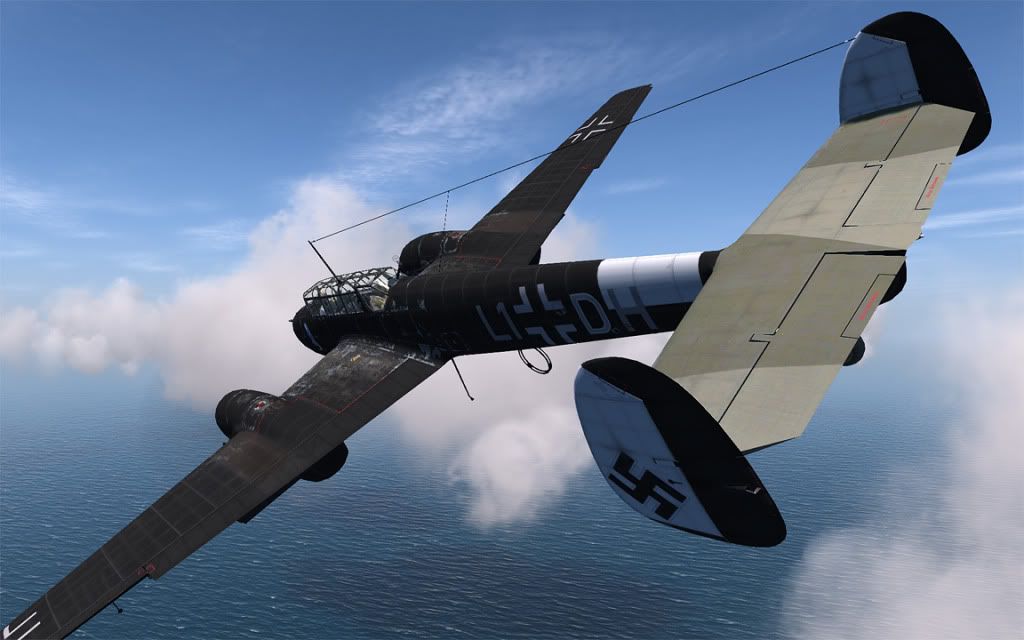 The lighter underside of the tail has led some to assume that the entire section must have been replaced and so color the upper surface with a corresponding splinter pattern, although there is no support for such a scheme (at least, on the basis of this photograph).  The mixed array of colors does make for an interesting skin, however--and, of course, there is the owl perched on a crescent moon. L1+DH in black can be downloaded here, with its splinter tail section here, and with a black upper tail surface and lighter underside here. |
|
#24
|
|||
|
|||
 well done on NJG1, my picture shows my grandfather infront of his plane, he was in the NJG4, navi--reargunner, in the 110 later JU-88. I dont have a better picture now, I cant see the rear numbers well, and I dont know if infront of the nose patch, if it is a Nr. like II, I dont know, but it would be cool to have this skin aelius..... thank you for now I fly with the NJG1 skin, awsom job... |
|
#25
|
|||
|
|||
|
With my compliments, MoGas, here's your personal mount.
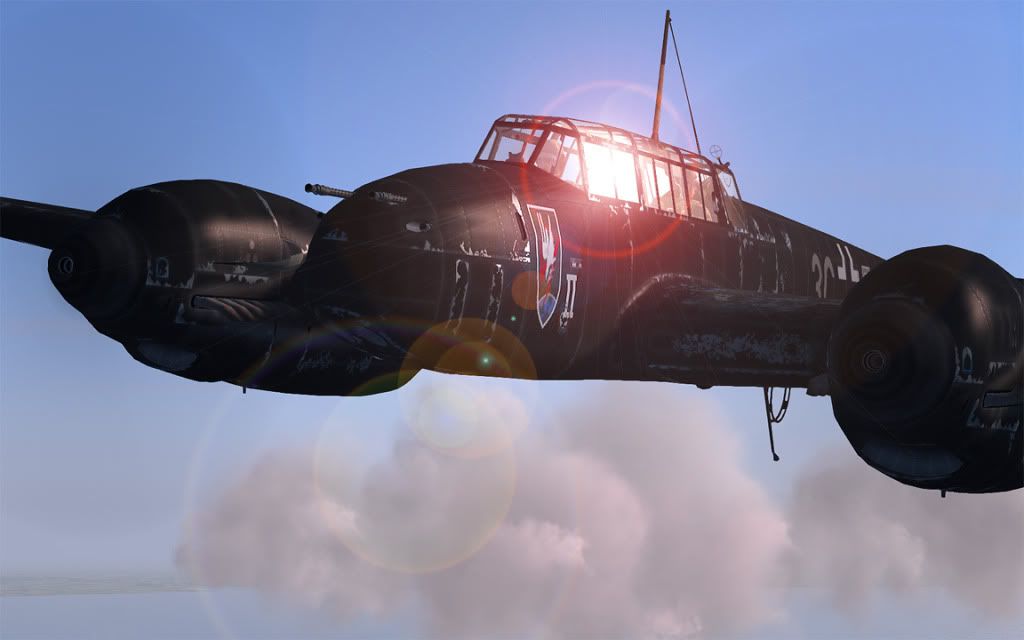 The letters on the fuselage are not readily visible, but we know that the unit code for NJG 4 was 3C. The third letter may be an outlined "E." The letter identifying the staffel is completely illegible, so I have your grandfather flying in the plane of the Geschwader Stab. Another old photograph from the period might have looked like this. 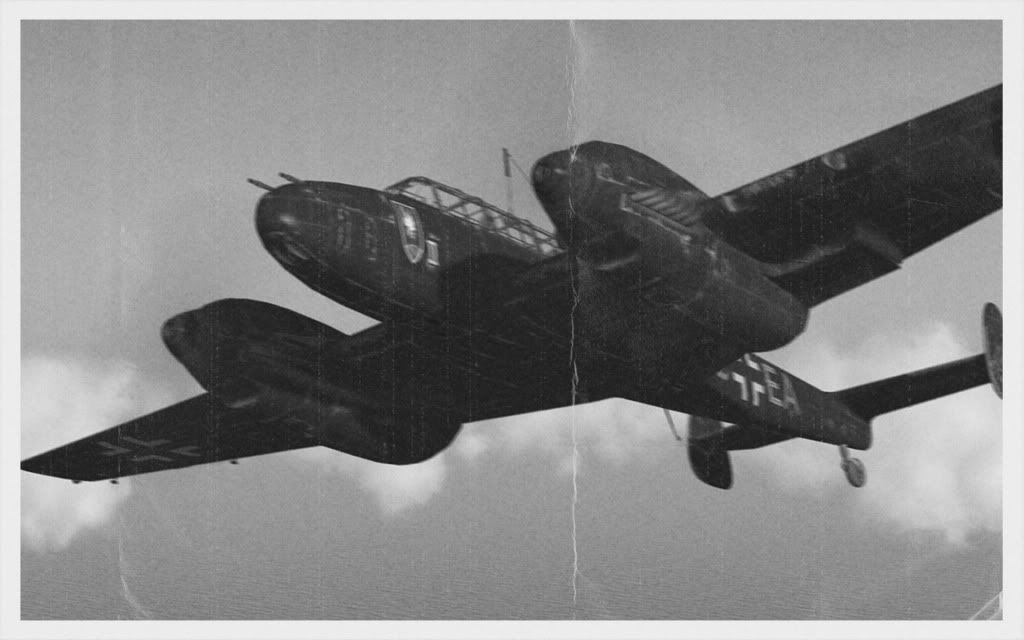 Although the plane's identifying letter is not shown under the wings, I did add it to the template, which is here. |
|
#26
|
|||
|
|||
|
Thanks for all these skins mate! I really like them and appreciate your efforts!
Keep it up |
|
#27
|
|||
|
|||
|
Thank you.
The encouragement is appreciated. |
|
#28
|
|||
|
|||
|
AWSOME aelius, thank you very much!
best regards MoGas |
|
#29
|
|||
|
|||
 Belonging to 7./NJG 4, this nightfighter is an E-type that was based at Mainz-Finthen in the summer of 1942. The plane has been profiled several times in the literature, usually with its unit code in gray, although Breffort and Jouineau display the characters in red. It is this uncertainty that makes the plane so intriguing: discerning which color is correct, as both look almost the same in a black-and-white photograph. 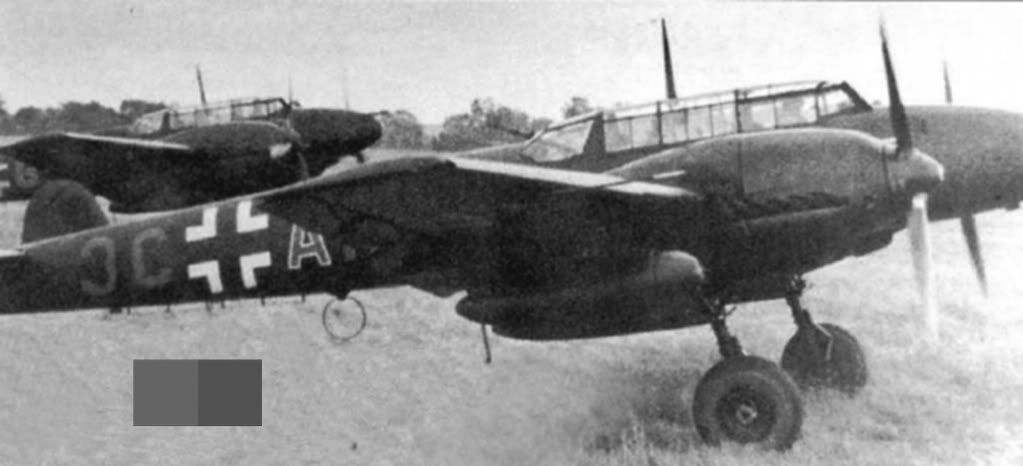 In this grainy photo of 3C+AR on the ground, I've superimposed RLM 02 (grau) and RLM 23 (rot) in gray scale so one can see how similar they are. But if rendering unit codes in color can be problematic, deciphering them is less so: "3C" designates Nachtjagdgeschwader 4; the letter "A," which is outlined in the color the Staffel (white), the particular aircraft in the squadron (and flown by its Staffelkapitan); and "R," 7 Staffel, III Gruppe. The spinner tips also are in the color of the Staffel, which no doubt made the plane a bit more visible when lined up on a darkened runway. The Englandblitz on the nose is larger and less bomb-shaped on the planes of NJG 4 and moved farther back on the fuselage, under the canopy. I've made this change for 3C+AR, which can be downloaded here. |
|
#30
|
|||
|
|||
|
very nice aelius, I see my grandfather this friday (92years old) I will ask him about the codes and colors (hope he still knows it), where they are based and soo on...
|
 |
|
|